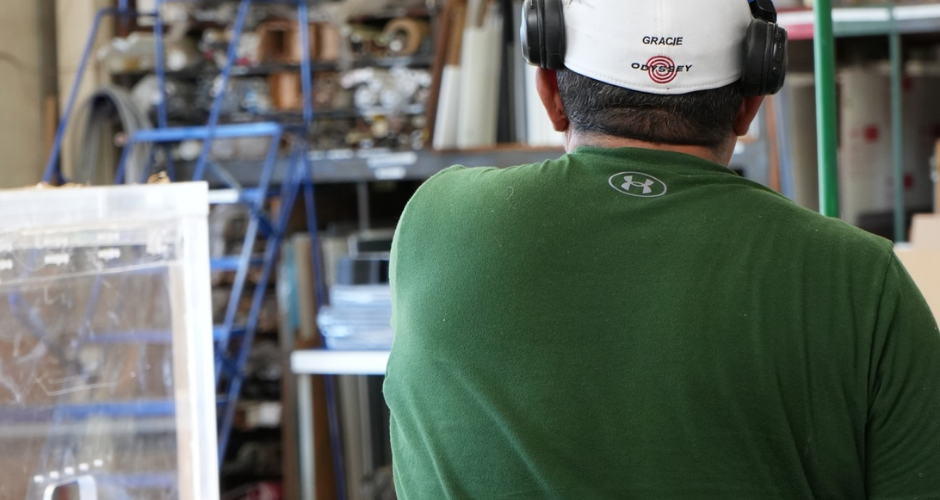The Science Behind Stronger Bonds: Modern Plastic Welding Techniques
- Revvia Assistant
- 2 hours ago
- 3 min read

Creating durable, high-performance plastic components is both an art and a science. At the heart of this process lies one key innovation: plastic welding.
This technology has revolutionized how manufacturers, builders, and designers join materials, producing cleaner, stronger, and longer-lasting results than traditional adhesives or mechanical fasteners ever could.
From fiberglass fabrication in industrial applications to acrylic fabrication for architectural and design projects, modern plastic welding is shaping how materials come together, and stay together. But what exactly makes these bonds so strong? Let’s break down the science and innovation behind this essential fabrication technique.
How Plastic Welding Works: The Science of Molecular Bonding
At its core, plastic welding is about creating a seamless connection between two thermoplastic parts by applying heat, pressure, or friction until the materials reach their melting point. Once the surfaces fuse and cool, they form a single, continuous piece, one that’s often stronger than the original material itself.
Unlike gluing or fastening, plastic welding doesn’t rely on a third-party substance. Instead, it uses physics, heat transfer, molecular diffusion, and solidification, to create a chemical bond. The result is a cleaner, more uniform finish with no weak points or gaps.
Plastic fabricators use various welding techniques depending on the type of material, thickness, and application.
Some of the most common include:
Hot Gas Welding: Uses a stream of heated air to soften the joining surfaces, ideal for PVC and polyethylene.
Ultrasonic Welding: Uses high-frequency vibrations to create frictional heat, commonly used for small precision components.
Laser Welding: Provides pinpoint accuracy for intricate or delicate parts, such as in acrylic fabrication.
Extrusion Welding: Perfect for thicker or structural applications, often used in fiberglass fabrication and heavy-duty plastic structures.
Each method leverages precise temperature and timing controls to ensure a perfect bond, because in modern fabrication, precision is everything.
The Benefits of Modern Welding: Strength, Efficiency, and Aesthetics
The appeal of plastic welding lies not only in its scientific precision but also in the advantages it offers to fabricators and end users alike.
Unmatched Strength:
Welded plastics maintain structural integrity even under stress, vibration, or environmental exposure. This makes them ideal for demanding industries like construction, marine, and aerospace. When done properly, a welded joint can match, or exceed, the strength of the base material.
Seamless Aesthetics:
For design-forward industries like architecture and retail, acrylic fabrication benefits greatly from welding’s smooth, invisible seams. Laser and hot plate welding techniques allow for crystal-clear joints without bubbles or residue, enhancing the visual quality of finished products.
Efficiency and Cost-Effectiveness:
Modern welding methods reduce material waste and assembly time. Unlike adhesives that require curing or mechanical fasteners that need drilling, welding allows for faster, cleaner production. For plastic fabricators, this means greater consistency, shorter turnaround times, and lower long-term costs.
Durability in Harsh Conditions:
Plastic welding also enhances resistance to moisture, chemicals, and UV exposure. This makes it invaluable in fiberglass fabrication for tanks, pipes, and outdoor structures, where durability is non-negotiable.
The takeaway? Welding doesn’t just join materials, it enhances their performance, aesthetics, and longevity in ways traditional bonding can’t.
Technology and Innovation: The Future of Plastic Fabrication
As technology evolves, so does the science of plastic welding. Automation, precision sensors, and digital monitoring are making it possible to achieve consistent weld quality across complex shapes and materials.
Smart welding systems can now detect variations in material thickness or temperature and adjust parameters in real time to maintain ideal bonding conditions. This ensures precision without relying solely on operator experience, reducing errors and improving repeatability.
For plastic fabricators, these advancements mean greater creative freedom. Designers can combine materials like acrylic and polycarbonate, or integrate fiberglass components, without worrying about compatibility or weak seams.
Additionally, modern welding contributes to sustainability goals. By minimizing waste, reducing the need for toxic adhesives, and extending product lifespans, it supports more environmentally responsible manufacturing practices.
The result? A future where plastic fabrication is not only stronger and more efficient but also cleaner and greener.
Applications Across Industries
Plastic welding has become indispensable across a range of industries:
Construction: For watertight seals in tanks, ducting, and structural components.
Marine: In fiberglass fabrication, welding ensures seamless hulls and panels that resist corrosion and water damage.
Architecture and Design: In acrylic fabrication, welding creates flawless displays, fixtures, and panels.
Automotive and Aerospace: For lightweight, high-strength components that improve efficiency and safety.
Its adaptability means it can meet the exact needs of both functional and aesthetic projects, proof that science and design can coexist beautifully.
The Bottom Line: Stronger Bonds, Smarter Solutions
Plastic welding represents the perfect blend of technology, craftsmanship, and science. Whether in fiberglass fabrication, acrylic fabrication, or any other advanced material work, it delivers durability, precision, and design freedom that elevate every project.
Ready to experience the strength and precision of modern fabrication? Partner with expert plastic fabricators who understand the science behind stronger bonds, and who can bring your vision to life, one seamless weld at a time.
.png)




Comments